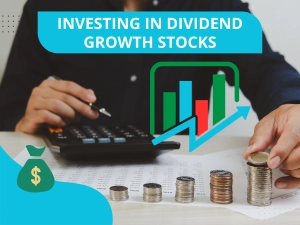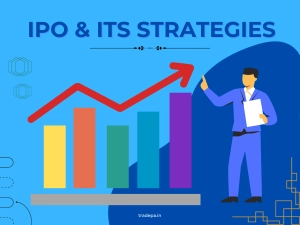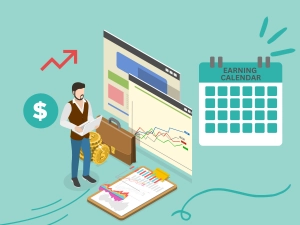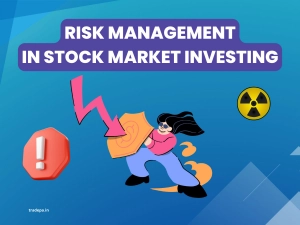The Hidden Power of Investment Compounding

Introduction
In finance, one term stands out as a cornerstone of wealth accumulation: compounding. But what exactly is compounding, and why is it so crucial for investors, especially beginners? Compounding refers to the process by which an investment's earnings generate additional earnings over time, leading to exponential growth. It's like a snowball effect, where your money earns money, and then that money earns even more money.
Understanding the concept of compounding is essential for anyone looking to build wealth through investments. At its core, compounding is the process by which an investment generates earnings that are reinvested to generate further earnings. This cycle repeats over time, resulting in exponential growth of your initial investment. To break it down, let's start with the basic principles. When you invest money, you earn a return on that investment. With compounding, those returns are reinvested, allowing you to earn returns on both your initial investment and the accumulated returns. Over time, this snowball effect can lead to substantial growth in your investment portfolio.
Compounding relies on two fundamental principles: time and reinvestment. The longer you leave your money invested, the more time it has to grow through compounding. Additionally, reinvesting your earnings allows you to maximize compounding's full potential. Instead of withdrawing your returns, you leave them in your investment account, where they continue to earn returns alongside your initial investment. This continuous reinvestment accelerates the growth of your portfolio over time.
How Compounding Works Over Time

Let's consider a simple example to understand how compounding works over time. Suppose you invest $1,000 in a stock with a 10% annual return. In the first year, you earn $100 in returns, bringing your total investment to $1,100. In the second year, you earn 10% not just on your initial $1,000 but on the entire $1,100, resulting in $110 in returns. As this cycle repeats yearly, the amount of money you earn from compounding grows exponentially. This illustrates the power of compounding and highlights the importance of starting early and giving your investments time to grow.
Visualizing Compounding with Examples
Understanding compounding can be further enhanced through visualizing examples. One way to grasp its impact is by comparing simple interest with compound interest. Simple interest is computed solely on the principal amount, meaning you earn a fixed percentage of your initial investment each year. In contrast, compound interest allows you to earn interest not only on your initial investment but also on any interest accumulated from prior periods.
Simple vs. Compound Interest
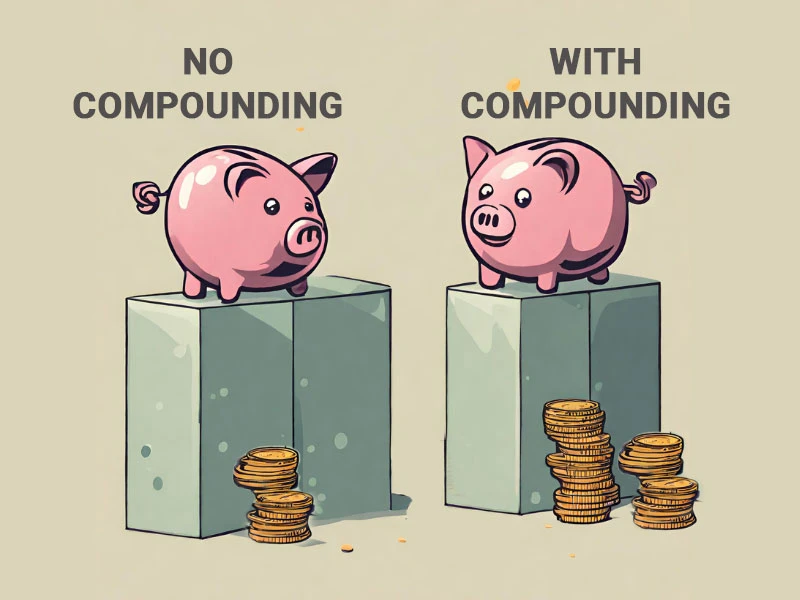
Let's illustrate the difference between simple and compound interest with a hypothetical scenario. Imagine you invest $1,000 at a 5% interest rate. With simple interest, you would earn $50 yearly, regardless of how many years you invest. However, with compound interest, your earnings would grow over time. In the first year, you'd earn $50 in interest. In the second year, you'd earn 5% of $1,050, resulting in $52.50 in interest. As you continue reinvesting your earnings, your returns will compound, leading to more significant growth.
Illustrative Scenarios to Grasp its Impact
To further understand the impact of compounding, let's consider two scenarios. In the first scenario, an investor begins investing $100 monthly at the age of 25 and continues to do so until retirement at 65, earning an average annual return of 7%. In the second scenario, another investor starts investing the same amount but waits until the age of 35 to begin. Despite investing the same amount each month, the investor who started earlier would have significantly more money at retirement due to the extra years of compounding. This example highlights the importance of starting early and allowing them to compound over time.
The Significance of Time and Rate in Compounding
In compounding, time and rate play critical roles in determining the growth of your investment portfolio. Firstly, the time horizon, or when your money remains invested, is often called the investor's best friend. The longer you allow your investments to compound, the greater the potential for exponential growth. This emphasizes the significance of starting early and staying invested for the long term to maximize the benefits of compounding.
Secondly, the interest rate directly impacts the rate at which your investments grow. Even slight differences in rate of interest can significantly affect the final value of your investment portfolio over time. By leveraging higher interest rates, investors can accelerate the growth of their wealth through compounding. However, balancing seeking higher returns and managing risk effectively is essential. By understanding the significance of time and rate in compounding, investors can make informed decisions to optimize their investment strategy for maximum growth.
Historical Examples of Compounding
Looking back at historical success stories can provide valuable insights into the power of compounding in investments. Throughout history, numerous legendary investors have achieved remarkable wealth through the disciplined application of compounding principles. Their journeys inspire beginners looking to embark on their investment journey.
Tales of Legendary Investors and Their Compounding Journeys
One such example is the story of Warren Buffett, often regarded as one of the exceptional investors of all time. Buffett started investing at a young age and consistently applied the principles of compounding throughout his career. Buffett's wealth grew exponentially over time through patient and disciplined investing, turning him into a billionaire and cementing his status as an investment icon. His journey underscores the importance of starting early, remaining invested for the long term and enabling the power of compounding to unfold its potential.
Highlighting the Power of Patience and Consistency
Another critical aspect of historical compounding success stories is the emphasis on patience and consistency. Investors like Buffett didn't achieve their wealth overnight; it took years of steadfast commitment to their investment strategies. By staying the course, remaining patient during market fluctuations, and consistently reinvesting their earnings, these investors were able to harness the full potential of compounding. Their stories serve as a reminder that while investing may not always yield immediate results, the rewards of long-term compounding can be genuinely transformative.
Compounding in Different Investment Vehicles
Understanding how compounding works across various investment options is essential for beginners looking to grow their wealth over time. Different investment vehicles offer unique opportunities for compounding, each with its own risk and return characteristics.
- Stocks and Equities: Investing in individual stocks or equities can offer significant growth potential through compounding. When you invest in stocks, you become a partial company owner, and your returns are tied to its performance. Over time, successful companies can generate substantial profits, leading to capital appreciation and dividend payments, which contribute to compounding.
- Bonds and Fixed-Income Securities: Bonds and fixed-income securities are debt instruments that provide regular interest payments to investors. While the potential for capital appreciation may be lower compared to stocks, bonds offer stability and predictable income streams. Reinvesting these interest payments can facilitate compounding over time, making bonds a valuable component of a diversified investment portfolio.
- Mutual Funds and Index Funds: These funds typically offer exposure to a wide range of stocks or bonds, providing investors with instant diversification. Through reinvesting dividends and capital gains, investors can use compounding within these funds, benefiting from the growth of the underlying assets.
Tailoring Investment Strategies for Compounding
- Diversification and Risk Management: Diversification is a crucial strategy for managing risk while harnessing the power of compounding. By diversifying investments across various asset classes, industries, and geographic regions, investors can reduce the impact of market fluctuations on their portfolios. Diversification helps protect against the risk of individual investments underperforming and enhances the potential for long-term growth through compounding.
- Balancing Short-Term Gains vs. Long-Term Growth: When developing an investment strategy for compounding, it's essential to balance short-term gains and long-term growth. Although it might be tempting to pursue rapid profits, focusing on long-term investment goals and staying committed to a disciplined investment approach is key to maximizing the benefits of compounding.
Strategies for Maximizing Compounding
Maximizing the power of compounding in investments requires strategic planning and disciplined execution. By implementing specific strategies, beginners can lay the groundwork for long-term financial success and amplify the benefits of compounding.
Setting the Foundation for Successful Compounding
- Establishing Clear Financial Goals: The first step in maximizing compounding is to define clear financial goals. Whether saving for retirement, buying a home, or funding a child's education, having specific objectives helps align investment decisions with long-term aspirations. By setting achievable goals, beginners can stay focused and motivated throughout their investment journey.
- Creating a Disciplined Savings and Investment Plan: Once goals are established, developing a disciplined savings and investment plan is essential. This plan should outline how much money will be invested regularly, the investment vehicles to be utilized, and the timeline for achieving financial objectives. Consistently contributing to investment accounts, such as retirement or brokerage accounts, ensures a steady stream of funds to capitalize on the power of compounding.
Leveraging Compounding Through Strategic Actions
- Reinvesting Dividends and Interest: One of the most effective ways to leverage compounding is by reinvesting dividends and interest earned from investments. Rather than withdrawing these earnings, reinvesting them back into the investment portfolio allows for exponential growth over time. By continuously reinvesting dividends and interest, beginners can accelerate the compounding process and maximize their long-term returns.
- Dollar-Cost Averaging: Smoothing Out Market Fluctuations: Dollar-cost averaging is a strategic investment approach that involves investing a consistent amount of funds at regular intervals, regardless of market conditions. This technique helps smooth out market fluctuations by purchasing additional shares when prices are low and fewer shares when prices are high. Over time, dollar-cost averaging can lower the average cost per share and enhance the overall returns of the investment portfolio. By incorporating this strategy into their investment plan, beginners can mitigate the impact of market volatility and optimize the benefits of compounding.
Overcoming Common Compounding Obstacles
Despite the immense growth potential, beginners may encounter common obstacles when harnessing the power of compounding in investments. By identifying and addressing these hurdles, investors can establish the foundation for long-term financial success and unlock the full benefits of compounding.
Identifying Hurdles to Effective Compounding
- Impatience and Short-Term Thinking: One of the biggest obstacles to effective compounding is the temptation to prioritize short-term gains over long-term growth. Many beginners may succumb to the desire for instant gratification, leading them to make impulsive investment decisions or chase after speculative opportunities. However, successful compounding requires patience and a focus on the bigger picture. By resisting the urge to constantly monitor investment performance and avoiding knee-jerk reactions to market fluctuations, investors can stay on course for long-term success.
- Overestimating Risk and Underestimating Rewards: Another common hurdle is the tendency to overestimate the risks associated with investing while underestimating the potential rewards of compounding. Fear of loss or uncertainty about the future may prevent beginners from taking necessary risks to achieve higher returns. However, it's essential to recognize that risk and reward are inherently linked in investing, and calculated risks are often required to generate significant growth. By understanding their risk tolerance and diversifying their investment portfolio accordingly, investors can mitigate potential losses while still capturing the rewards of compounding.
Developing a Mindset for Long-Term Success
- Cultivating Patience and Resilience: Overcoming common compounding obstacles requires cultivating a mindset of patience and resilience. Investing is a long-term endeavour, and success rarely happens overnight. Beginners must be prepared to weather market volatility and stay committed to their investment strategy despite temporary setbacks.
- Staying Focused on the End Goal Amidst Market Volatility: Lastly, beginners must stay focused on the end goal amidst market volatility. The stock market is inherently unpredictable, and short-term fluctuations are inevitable. However, it's essential to remember that investing is a marathon, not a sprint.
Practical Steps for Initiating Compounding in Investments
- Start Early and Stay Consistent: The first step is to start investing as early as possible and stay consistent with contributions over time. Even small amounts invested regularly can grow significantly through compounding. By automating contributions to investment accounts, beginners can ensure consistency and make compounding a seamless part of their financial habits.
- Diversify and Reinvest: Diversification is key to managing risk while maximizing the benefits of compounding. To minimize volatility, beginners should spread their investments across different asset classes, industries, and geographic regions. Additionally, reinvesting dividends and interest earned from investments allows for continuous compounding and accelerates the investment portfolio's growth.
Encouraging consistency and commitment to the process is essential for harnessing compounding's full potential. While the journey may have ups and downs, staying focused on long-term goals and remaining disciplined in investment decisions will ultimately lead to financial success.
Conclusion
In conclusion, the power of compounding in investments is a force to be reckoned with. Through the simple concept of reinvesting earnings, investors can witness their wealth grow exponentially over time. By understanding the basics of compounding and exploring various investment vehicles and strategies, beginners can lay a solid foundation for long-term financial success.
Key takeaways from this exploration include the understanding that time is the investor's best friend. Starting early and staying invested long-term allows compounding to work its magic. Additionally, the importance of patience and consistency must be balanced. By remaining disciplined in savings and investment habits, investors can maximize the benefits of compounding.
It's always possible to start harnessing the power of compounding. Whether you're just beginning your investment journey or looking to enhance your existing portfolio, compounding offers a pathway to financial growth and security. By taking action today and staying committed to your long-term goals, you can set yourself on a path towards a brighter economic future.
Finally, it's important to emphasize the transformative potential of long-term, consistent investing with compound growth. While the journey may have its ups and downs, persevering and staying committed to the end goal can lead to remarkable outcomes. By embracing the power of compounding and incorporating it into your investment strategy, you can pave the way for a more prosperous tomorrow. So, let's embark on this compounding journey together and watch our wealth grow over time.


